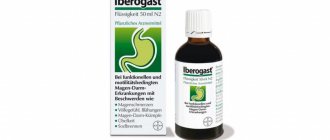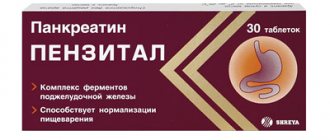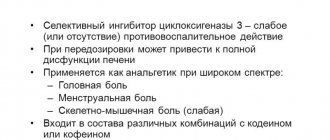Depression is a common illness, affecting approximately 20% of people in developed countries. Her therapy includes an integrated approach, including the use of medications. The new generation tranquilizer Grandaxin for depression is prescribed in case of moderately severe symptoms. It has a gentle effect on the patient’s psycho-emotional background, while exhibiting a minimum of side effects.
Composition and release form
The medicine is dispensed in the form of tablets for oral administration. Externally, they are white or have a slight gray tint, and are flat in shape. There is a risk and an unexpressed odor. Packaged in blisters of 10 pieces. One cardboard box contains 2 or 6 blisters with attached instructions for use.
The active ingredient is tofisopam in an amount of 50 mg.
Additional substances: talc, gelatin, potato starch, lactose, magnesium stearate, stearic acid.
*Neuroscanner works with standard questionnaire forms, which can be downloaded in the application or on the Neuroscanner.ru website
1. K Kroenke, AD Mangelsdorff Common symptoms in ambulatory care: incidence, evaluation, therapy, and outcome (1989) https://pubmed.ncbi.nlm.nih.gov/2919607/ 2. Rodermel T.A., Shumilova E. .A. Psychological view on the causes of the origin of psychosomatic diseases // International Journal of Applied and Basic Research (2016) https://www.applied-research.ru/ru/article/view?id=9999 3. Autonomic disorders: Clinic. Diagnostics. Treatment. Edited by A.M. Veina ed. Moscow 2003, p. 455 4. Dyukova G.M. Grandaxin in clinical practice. Treatment of nervous diseases. 2005 2(16). 25-29 5. Giovanni A Fava, Nicoletta Sonino Psychosomatic Medicine: Emerging Trends and Perspectives (2000) https://pubmed.ncbi.nlm.nih.gov/10867586/ 6. Giovanni A Fava, Fiammetta Cosci, Nicoletta Sonino Current Psychosomatic Practice (2017) https://pubmed.ncbi.nlm.nih.gov/27884006/ 7. Lara Mangelli, Federica Semprini, Laura Sirri, Giovanni A. Fava, Nicoletta Sonino Use of the Diagnostic Criteria for Psychosomatic Research (DCPR) in a Community Sample (2006) https://www.sciencedirect.com/science/article/abs/pii/S003331820670007X 8. Giovanni A Fava 1, Fiammetta Cosci, Nicoletta Sonino Current Psychosomatic Practice (2017) https://pubmed.ncbi .nlm.nih.gov/27884006/ 9. WHO Expert Committee on Mental Health & World Health Organization Psychosomatic disorders: thirteenth report of the WHO Expert Committee on Mental Health (1964) https://apps.who.int/iris/handle /10665/37991 10. Nisar, Hifsa & Srivastava, Rahul Fundamental Concept of Psychosomatic Disorders: A Review (2018) https://www.researchgate.net/publication/322950497_Fundamental_Concept_of_Psychosomatic_Disorders_A_Review 11. K. Korttila, K. C. Shrotriya. Psychopharmacology (Berl), 69 (2), 1980 J. Szegy, M. Somogyi, etc. Acta Pharm Hung, 63 (2), 1993 12. E. Arushanyan. Experimental and clinical pharmacology, vol 68, no. 4, 2005, Placebo-controlled clinical trials N=63 (age 19-23) with anxiety disorder 13. Instructions for medical use of the drug Grandaxin® 14. www.escardio.org/Th e_ESC/ Press-releases/Women-more-likely-to-develop-anxiety-and-depression-after-heartattack 15. Statsenko M.E., Govorukha O.A. The influence of Grandaxin on quality of life indicators and the pace of rehabilitation of patients with heart failure who have suffered a myocardial infarction // Medicine Bulletin. – 2004 – T.Z. -№1.2-С18 16. Sukhotina N.V., Slutskaya N.P. et al. Grandaxin® in the correction of extrasystole in patients with coronary artery disease with neurocirculatory dystonia. Healthcare of the Far East 2004; 2(3): 11-12. 17. Skvortsov G.Yu., Golovacheva T.V. The effectiveness of tofisopam (Grandaxin) in the treatment of coronary artery disease: clinical and instrumental confirmation. Clinical pharmacology and therapy, 2001; 1: 52-55 18. Efremova L.I. "Complex treatment of peptic ulcer with the inclusion of Grandaxin." Doctor 2009; (3): 50-54 19. E. B. Arushanyan, O. A. Baida (Mastyagina), S. S. Mastyagin, A. V. Popov / Department of Pharmacology (Stavropol State Medical Academy, Stavropol, 355017, st. Mira, 310 CHRONOBIOLOGICAL FEATURES OF THE INFLUENCE OF TOPHYSOPAM ON HEART RATE VARIABILITY IN HUMANS Experimental and Clinical Pharmacology 2005;68(4):36-39 20. www.narodnayamarka.ru/arkhiv-laureaty-premii/2018, based on the results of consumer voting 21 www.grls.rosminzdrav.ru/grls.aspx 22. Volchansky M.E. et al. Psychosomatic diseases. Resolved and unresolved issues. Bulletin of Volgmu, Issue 2(42).2012
pharmachologic effect
Grandaxin is an effective tranquilizer that helps relieve symptoms of fear and anxiety in various psychological and autonomic disorders. It also has a stimulating property. It can be prescribed to patients with myopathies and myosthenia. The drug does not have any dependence; upon completion of the treatment course there is no withdrawal syndrome. Is a daytime remedy.
After oral administration, it is instantly absorbed by the gastrointestinal tract and the active components are absorbed into the bloodstream. The highest concentration of Grandaxin occurs after 2 hours. Most of it is excreted in urine and the rest in feces.
Pharmacological group
Grandaxin is classified as an anxiolytic (anti-anxiety) drug or tranquilizer. Most representatives of this group, in addition to anti-anxiety effects, also exhibit others, including:
- sedative – decreased mental and motor activity;
- hypnotic;
- anticonvulsant;
- muscle relaxant - relaxing.
Such effects make it impossible to take such drugs during the day while driving.
Grandaxin is a fundamentally new tranquilizer with a pronounced anxiolytic effect. Its active ingredient is tofisopam, an atypical benzodiazepine derivative. It is synthesized by transforming the molecular structure of diazepam. Thanks to this feature, it is not capable of causing addiction and withdrawal symptoms.
The action of benzodiazepines is based on increasing the sensitivity of receptors to GABA - gamma-aminobutyric acid. This is the main neurotransmitter that causes inhibition in the brain and thereby stops excitement and has a calming effect. However, its excess provokes the opposite reaction - hyperactivity, anxiety, trembling in the arms and legs.
All benzodiazepines are divided into 3 classes, taking into account the predominant effect:
- with anxiolytic;
- with sleeping pills;
- with anticonvulsant effect.
Most representatives have all of the listed properties with one pronounced one. Grandaxin has an anti-anxiety effect, and other manifestations are practically absent.
Considering that the drug does not cause a feeling of drowsiness, relaxation and lethargy, and does not interfere with concentration, it is called a daytime tranquilizer and it is allowed to combine its use with driving, but only after consulting a doctor.
What does Grandaxin help with?
The main indications for use of the product are:
- The period before the onset of menopause.
- Pain in the heart.
- Violation of psychological adaptation.
- Severe premenstrual syndrome.
- Neuroses of any origin.
- Myasthenia and myopathy.
- Vivid clinical picture after withdrawal of alcoholic beverages.
- Nervous states - constant excitement, anxiety, apathy, fear, causeless worries.
- Vegetative-vascular dystonia.
How to recognize depression
As already mentioned, the drug helps get rid of depression, but not all of its forms. Grandaxin is taken only for mild to moderate disease with moderately severe symptoms.
During the course of the disease, several syndromes are distinguished:
- Emotional disorders: low mood, melancholy, anxiety and internal tension, pessimistic attitude; self-flagellation, lack of interest in the world around us, inability to have fun.
- Behavioral reactions: solitude, reduced activity; bad habits;
- Cognitive functions: inability to concentrate, slow thinking, decreased memory and perception; pessimistic thoughts, thoughts of suicide, low self-esteem.
- Autonomic disorders: poor sleep, appetite distortion, weakness and malaise, intestinal dysfunction; discomfort in the heart and other organs, headaches.
A specific indication for the use of the drug is reactive depression. It develops in response to the action of some traumatic factor. The condition is characterized by a consistently reduced emotional background and fixation on the problem.
The patient reproaches and blames himself for what happened, his conversations are aimed only at the problem. And, constantly analyzing it, he seeks support from those around him.
A person is worried about insomnia. And he is fully aware of his condition.
Attacks of despair and demonstrative hysterics are possible. Excitement reaches a state called “melancholic raptus.” At the same time, the person rushes about aimlessly, sobs, screams, and suicide attempts are not ruled out.
This state can be replaced by a depressive stupor, when the patient “freezes” in one position, not reacting to what is happening.
Contraindications
Prohibited conditions for taking a tranquilizer are:
- Frequent apnea at night.
- Serious form of respiratory failure.
- Individual intolerance to the active or auxiliary components.
- The first 3 months of bearing a child and the period of breastfeeding.
The drug contains lactose, so patients suffering from deficiency or intolerance to this substance should not use the medicine.
Grandaxin is prescribed with caution to patients with glaucoma, epilepsy attacks, atherosclerosis and respiratory failure.
Limitations and adverse reactions
Contraindications to the use of the drug are:
- severe forms of depression - with them there is a high probability of suicidal thoughts and actions;
- phobias, obsessions - possible increase in aggression;
- allergic reactions;
- uncompensated respiratory failure.
The drug is prescribed with caution to elderly people due to their increased susceptibility to it. It is not recommended to use it at this age for too long a time.
The drug is contraindicated for children under 18 years of age. It can be taken only in rare cases after carefully weighing the need and risks. In this case, therapy should be short-term.
Taking the drug in the 1st trimester of pregnancy is contraindicated. It easily crosses the placental barrier and can cause developmental defects in the child. Grandaxin can pass into breast milk, so you should avoid breastfeeding while treating with the drug.
Otherwise, when it enters the child’s body, it accumulates and causes a sedative effect. The newborn's sucking reflex decreases, he cannot suck out milk fully, and loses weight.
Despite the mild effect of the drug, it still exhibits some side effects:
- headaches, agitation and aggressiveness;
- sleep problems;
- confusion;
- increased frequency of seizures in epileptic patients;
- breathing disorders;
- poor appetite, thirst, digestive problems;
- jaundice;
- muscle hypertonicity, muscle pain;
- allergic manifestations.
In such cases, taking the drug is canceled.
Side effects
Treatment with the drug may cause the following side effects:
- Dyspeptic symptoms - nausea, constipation, flatulence, loss of appetite, dry mouth and signs of jaundice.
- Pain in the muscles.
- Allergic reactions - itching, skin rash, exanthema, urticaria.
- Headache, confusion, sleep disturbance, symptoms of irritability, increased agitation.
Grandaxin and other tranquilizers
Due to its mild and selective effect, the drug has a minimum of side effects, unlike other anxiolytics. It does not cause the negative consequences inherent in most representatives of this group. The main ones are:
- "Behavioral Toxicity." Manifested by increased sleepiness during the day, weakness and malaise. Characterized by decreased reaction speed and inability to concentrate. Coordination of movements is impaired, and confusion may occur.
- Addiction. A common problem when taking tranquilizers. There is a possibility that it will worsen even to substance abuse. But more often, addiction develops with long-term treatment with such drugs, with an unauthorized increase in dose or concurrent use of alcohol.
- Withdrawal syndrome occurs when you suddenly stop using a tranquilizer. In this case, the symptoms of the disease return to the patient in a more pronounced or even complicated form.
Grandaxin does not exhibit such complications. It is low-toxic and resistance to it is not developed upon repeated use. Therefore, it is taken during the daytime.
The drug does not reduce physical and mental activity and does not lead to drowsiness. It does not suppress the efficiency of perception, the speed of reactions, and does not interfere with professional activities.
Interactions with drugs
You cannot combine Grandaxin with Cyclosporine, Tacrolimus and Sirolimus.
The simultaneous use of the drug with sleeping pills, antidepressants, sedatives, painkillers and antipsychotic drugs leads to an increase in the sedative effect of the latter.
Alcoholic drinks and nicotine provoke rapid decomposition of the medicine. Therefore, the concentration of the main substance decreases and the therapeutic effect is suppressed.
Some antifungal pharmacological drugs interfere with the normal metabolism of Grandaxin, contributing to an increase in its level in the blood.
The effectiveness of the active substance is enhanced by Clonedin and calcium channel antagonists.
Special instructions for the medication
The development of adverse reactions is often observed in patients suffering from severe pathologies of the kidneys, liver, mental disorders, and also in elderly patients.
It is not recommended to take pills for psychoses, various phobias and obsessive states. In this case, there may be a tendency towards suicide and aggressive behavior.
The tranquilizer does not impair concentration and mental activity, therefore it is not prohibited to independently drive a vehicle during the treatment course.
Impact of Grandaxin
The main effect of the drug is manifested in the anxiolytic effect. It helps eliminate feelings of anxiety and fear, reduce emotional stress, anxiety and agitation, both mental and motor.
Tofizopam exhibits vegetative stabilizing properties to a high degree. With him it is expressed to the greatest extent compared to other tranquilizers:
- normalizes sleep - eliminates insomnia, promotes rapid falling asleep;
- restores blood pressure;
- stabilizes heart rate;
- reduces sweating;
- improves the functioning of the gastrointestinal tract, eliminates constipation.
The vegetative stabilizing effect is achieved by establishing a balance between the sympathetic and parasympathetic systems.
The stress-protective effect of Grandaxin protects the central nervous system from the effects of a destructive factor. It gives the patient a state of psychological comfort and provides an adequate assessment of what is happening. Protects against the development of unwanted vegetative-vascular reactions: tachycardia, vascular spasms, destruction of the gastrointestinal mucosa. Eliminates excitement.
Tofizopam has a coronary effect to some extent:
- improves coronary circulation;
- reduces the need for oxygen in the heart muscle;
- normalizes metabolism in cardiac tissues;
- increases the amount of oxygen delivered to the heart.
This ability of Tofizopam is widely used in the treatment of coronary heart disease. The drug stabilizes the functioning of both parts of the autonomic nervous system, and thereby improves the electrical conductivity of the heart muscle.
The psychostimulating effect of the drug helps restore the patient’s mental and physical activity. Helps improve cognitive functions, restores thinking abilities, improves mood. Strengthens the ability to resist the effects of unwanted environmental factors.
Grandaxin is recommended to be included in complex therapy as:
- enhancing the effect of antidepressants;
- to eliminate anxiety and panic attacks that can be triggered by starting to take antidepressant medications;
- in cases where the dosage of antidepressants is insufficient, and increasing it is impossible due to the risk of adverse reactions.
The use of the drug as monotherapy is undesirable.






